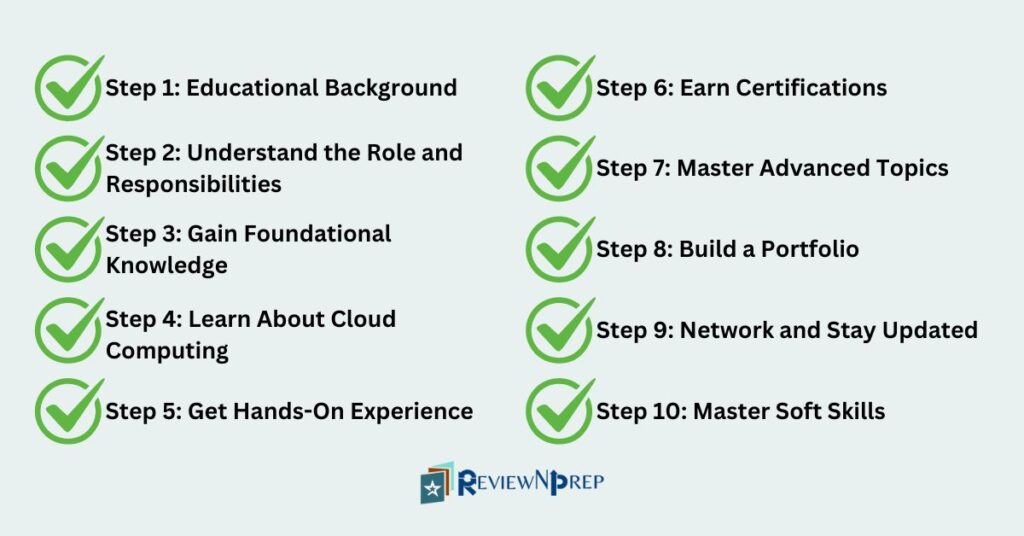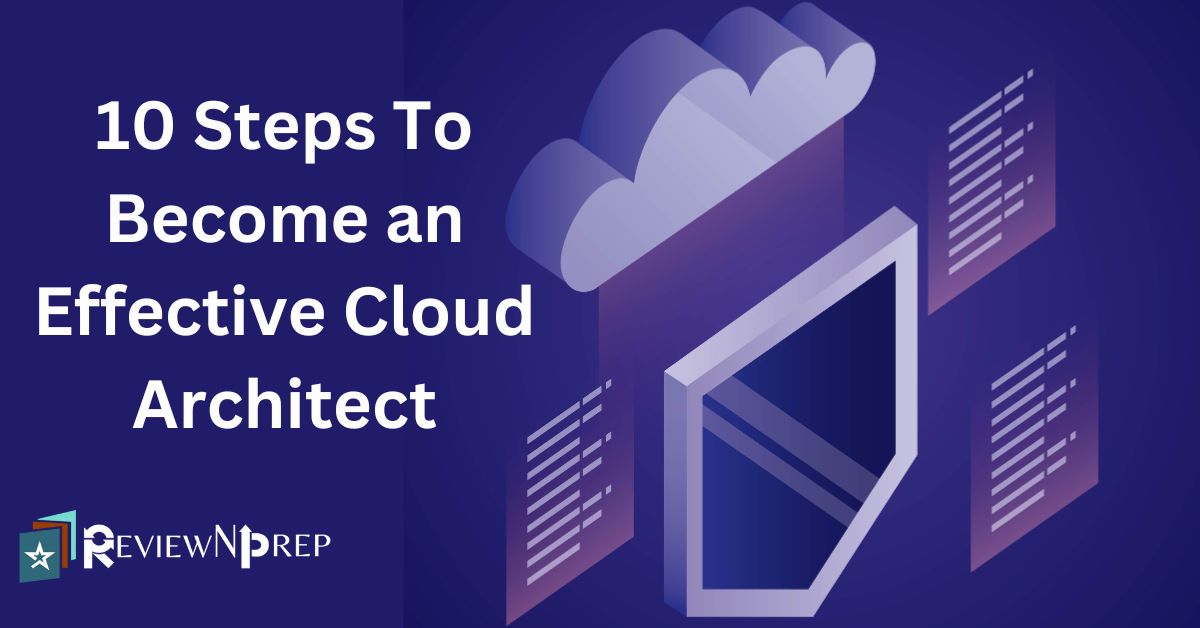As technology continues to evolve, cloud computing has become an essential part of modern IT infrastructure. With businesses increasingly moving their operations to the cloud, the role of a cloud architect has become crucial. In this blog post, we will explore what it means to be a cloud architect, the skills and qualifications needed, the steps to pursue this career, the challenges faced, and the future trends in this field.
What is a Cloud Architect?
A cloud architect is an IT professional responsible for designing, implementing, and managing an organization’s cloud computing strategy. This role involves overseeing cloud adoption plans, designing cloud applications, and managing and monitoring cloud environments.
Cloud architects work with platforms such as Amazon Web Services (AWS), Microsoft Azure, and Google Cloud Platform (GCP), ensuring that cloud solutions meet the company’s requirements for scalability, security, and reliability.
Some of the common roles and responsibilities of a cloud architect include:
- Client Interaction: If consulting, they meet with customers to understand their needs. If in-house, they collaborate with different business units (BUs) within their organization.
- Requirement Gathering: They engage with developers to understand the intricacies of applications, including the need for databases, caching layers, and the nature of the application (stateless or stateful).
- Legacy Systems: They assess legacy applications, including those that haven’t been updated for years, understanding the complexities involved in migrating such systems to the cloud.
- Security and Compliance: They consult with the security team to ensure all security requirements are met.
- Budgeting: They discuss financial constraints and budgets with the finance team.
- Solution Design: Throughout these interactions, they conceptualize a cloud solution that can transition on-premises applications to the cloud efficiently and securely.
As per Talent.com, The average cloud architect salary in the USA is $154,714 per year or $74.38 per hour. Entry level positions start at $135,137 per year while most experienced workers make up to $190,000 per year.
Difference Between a Cloud Architect and a Cloud Engineer
Cloud architects are strategic visionaries responsible for designing and planning cloud solutions. Whether working as a consultant for external clients or within an organization, they engage with various stakeholders to gather requirements and craft tailored cloud strategies. Their process often involves extensive whiteboarding sessions to visualize the architecture.
Cloud engineers are the hands-on implementers who bring the cloud architect’s vision to life. They focus on executing the detailed plans using specific tools and technologies. Engineers expertise lies in the implementation and creating efficiency while building code.
Skills and Qualifications Needed to Become an Effective Cloud Architect
Below is a detailed blueprint of how you can become a successful cloud architect. It is important to remember that becoming a cloud architect doesn’t happen overnight and takes time. You need to have the right job experience to be able to do justice to this role.
Step 1: Educational Background
Most companies when looking for an architect needs someone who has a bachelor’s degree in computer science, information technology, or a related field. This foundational education helps build a strong understanding of computer systems, networking, and software development. So, make sure you check this box.
Step 2: Understand the Role and Responsibilities
Before diving into technical skills, it’s essential to understand what a cloud architect does daily. Their responsibilities include:
- Designing cloud infrastructure and services.
- Managing cloud resources.
- Ensuring security and compliance.
- Optimizing performance and cost-efficiency.
- Collaborating with development and operations teams.
Step 3: Gain Foundational Knowledge
If you’re new to technology, start with the basics:
- Operating Systems: Get comfortable with operating systems like Linux and Windows.
- Cloud Platforms: Proficiency in one or more cloud service provider (AWS, Azure, GCP) is essential. Each platform has its own set of services and tools that a cloud architect must master.
- Programming and Scripting: Knowledge of programming languages such as Python, Java, and scripting languages like PowerShell is crucial for automating tasks and managing cloud environments.
- Networking: Understanding network management, VPNs, and related technologies is vital for designing and managing cloud infrastructure.
- Security: Familiarity with cloud security tools and best practices is necessary to protect data and applications.
- Database Management: Experience with both SQL and NoSQL databases is important for designing data storage solutions in the cloud.
Step 4: Learn About Cloud Computing
Cloud computing is the core of a cloud architect’s job. Start with the basics:
- Cloud Models: Understand different cloud models – Public, Private, Hybrid, and Multi-cloud.
- Service Models: Learn about IaaS (Infrastructure as a Service), PaaS (Platform as a Service), and SaaS (Software as a Service).
- Key Providers: Study the major cloud providers – AWS, Azure, and Google Cloud.
Step 5: Get Hands-On Experience
Practical experience is crucial. Here’s how you can gain it:
- Free Tiers and Trials: Use the free tiers of AWS, Azure, and Google Cloud to explore their services.
- Projects: Work on small projects, like deploying a web application or setting up a database on the cloud. Remember, having the right project experience enables you to be an effective cloud architect and build trust with your employer.
- Labs and Sandboxes: Utilize online labs and sandboxes like Qwiklabs and Pluralsight to practice real-world scenarios.
Step 6: Earn Certifications
Certifications validate your skills and knowledge. Some highly regarded certifications include:
- AWS Certified Solutions Architect
- Microsoft Certified: Azure Solutions Architect Expert
- Google Cloud Professional Cloud Architect
These certifications typically require passing an exam that tests your understanding of cloud services and architecture.
Step 7: Master Advanced Topics
To stand out as a cloud architect, delve into advanced topics:
- Security: Learn about cloud security best practices, encryption, and compliance.
- DevOps: Understand DevOps principles and tools like Docker, Kubernetes, and Jenkins.
- Automation: Master automation tools like Terraform and Ansible for infrastructure as code (IaC).
Step 8: Build a Portfolio
Showcase your skills with a strong portfolio. Your goal should be to become a thought leader in design patterns and technology. Below are important action items that can help you:
- Projects: Include detailed descriptions of your cloud projects.
- Case Studies: Highlight any challenges you solved and the impact of your solutions.
- Blogs and Tutorials: Share your knowledge by writing blog posts or creating video tutorials.
Step 9: Network and Stay Updated
Networking and continuous learning are vital:
- Communities: Join cloud communities and forums like Reddit’s r/cloud, Stack Overflow, or specific cloud provider communities.
- Conferences and Meetups: Attend industry conferences and local meetups to learn from experts and network with peers.
- Continuous Learning: Stay updated with the latest trends and advancements in cloud technology through blogs, webinars, and online courses.
Step 10: Master Soft Skills
Strong communication, problem-solving, and project management skills are essential for collaborating with teams and managing complex projects. Check out this blog that talks about how to improve your soft skills to be an effective technology leader.
The Hidden Power of Soft Skills: Why Coding Alone Won’t Cut It in Tech Careers
Common Challenges Faced by Cloud Architects and How to Overcome Them
Security and Compliance
Ensuring data security and regulatory compliance can be complex. Stay updated with the latest security protocols and regulations. Implement robust security measures and conduct regular audits to ensure compliance.
Cost Management
Managing cloud costs efficiently requires constant monitoring and optimization strategies. Use cost management tools provided by cloud platforms and implement best practices to minimize unnecessary expenses.
Integration
Integrating cloud services with existing systems can be challenging. Thorough planning and using middleware solutions can help streamline the integration process.
Scalability Issues
Designing systems that scale efficiently under load is crucial. Employ best practices in architecture design and use scalable cloud services to handle varying workloads.
Future Trends and Opportunities in Cloud Architecture
Hybrid and Multi-Cloud Strategies
Businesses are increasingly adopting hybrid and multi-cloud strategies to leverage the best features of different providers. This trend creates opportunities for cloud architects to design complex, multi-provider environments.
Edge Computing
The importance of edge computing is growing, reducing latency and improving performance for applications that require real-time processing. Cloud architects will need to design solutions that integrate edge computing with cloud services.
AI and Machine Learning
The integration of AI and ML capabilities into cloud services is becoming more prevalent. Cloud architects must understand how to incorporate these technologies into their designs.
Serverless Computing
Serverless architectures are gaining popularity for their efficient resource management and cost-effectiveness. Cloud architects need to be proficient in designing serverless solutions that meet business needs.
Conclusion – A Great Career Path Awaits You

Becoming a cloud architect requires a combination of technical skills, practical experience, and continuous learning. By understanding the role, acquiring the necessary skills, and staying updated with industry trends, you can build a successful career in cloud architecture. The demand for cloud architects is growing, making it an exciting and rewarding field with numerous opportunities for advancement.
Happy cloud architecting!
Further Reading:
Want to crack your next technical interview? Check out this blog for 5 most important tips.
Check out this link for Cloud Interview Questions that will help you prepare better.

